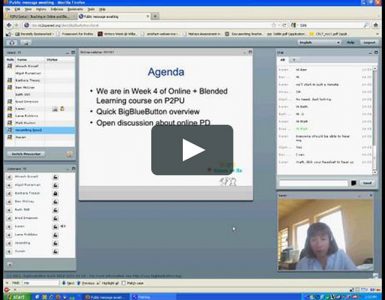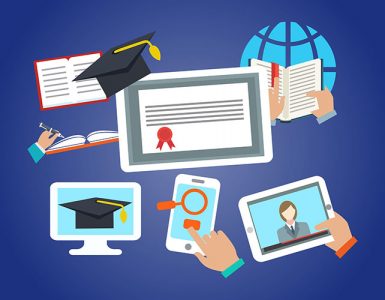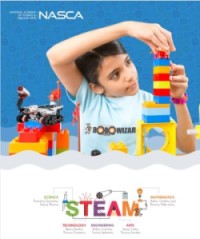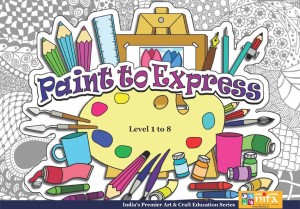Schools across the world today are recognising the importance of adopting the right technology solutions to prepare for the learning demands of tomorrow and beyond.
In other words, they are trying to become ‘future-ready’. While the term is being bandied about often across academia and the education world, it’s difficult to pin down what a future-ready student should look like given the pace at which the world is changing.
What is relevant today stands irrelevant a few months or years – or should we say even one year – down the line.
So, the question is what is the avatar of the future-ready student? And is it possible to tap into global trends and draw a character-sketch to aim for?
The answer is yes for, despite the smorgasbord of events in education, it is possible to tap into the trends and charter a path for students.
What’s needed is a vision, mission, intention and the acumen to study what other K12 educationists across the world are doing to create this ‘future-ready’ student. A converging thought across a spectrum of academicians is the paradigm shift in the approach towards teaching.
Student-led teaching
From a classroom-led model, the need of the hour, they say, is to make it a student-led initiative where students participate and have a say in choosing the technology needed to further their growth.
Another point of view states that it’s no longer just about technology. Students need to develop a larger vision, not just about their curriculum, but trends affecting the world today.
That larger world view will enable them to choose disciplines that match with the changing trends.
In the United States, for instance, the Future Ready Schools Initiative requires schools to go beyond one-to-one device initiatives and teaching apps.
“Schools, administrators and IT managers with a future-looking view on education already are thinking about the larger ecosystem, forecasting the emergence and impact of new technologies, and quickly adapting to the rapid changes taking place in the learning environment,” says Jon Phillips, managing director of Worldwide Education for Dell, writing for Edtech magazine.
“Overcoming the misconception that future-ready initiatives are all about the technology can be challenging. It’s important to start seeing students and teachers as partners in their education and recognise that student voice and choice are at the helm of successful future-ready education initiatives. Technology and the devices used are only secondary to that mission,” he advises.
Other factors
Experts have identified a long list of indicators that are considered critical for students’ future success – from content mastery to lifelong learning skills. But that’s not the whole story.
It turns out that passion, a sense of humour, and knowing how to recover from setbacks are also critical readiness factors when it comes to tackling real-world problems.
Those were among the insights shared by winners of the $1 million Hult Prize, which leverages student innovation to address global issues.
The competition challenges post-secondary students from around the world to improve the lives of billions of people by launching sustainable social businesses.
For today’s K-12 students — and their teachers — the competition offers a preview of the challenges and opportunities ahead.
Author Tom Bonnell in his article in Education Week, says it’s all about answering one question: “What are you doing in your classroom now that you could turn over to your students to do themselves?”
He continues, “Preparing students to be responsible for their own learning, to ultimately become “the teacher” themselves, must become one of our highest priorities in schools. Just as a parent’s ultimate success arrives on that day when the child can flourish independently of the parent, so our success as teachers should be measured in large part by our graduating students who have mastered the art of guiding their own learning, knowing what the important questions are, and how to find the answers.”
Lifelong Learning Skills
The key skill that experts identify as a must-have in ‘future-ready’ students is Lifelong Learning Skills.
According to researchers at the University of Wisconsin’s School of Education, “In a lifelong learning model, people learn by doing – individually, in groups, and from each other. And they put learning into practice and reflect upon the learning. Instructors are guides encouraging students to acquire knowledge and reflect on their learning.”
According to a report from the American Institutes for Research (AIR) College Readiness and Career Success Center, “Lifelong Learning Skills provide the foundation for learning and working. They broadly support student thinking, self-management, and social interaction, enabling the pursuit of education and career goals.
“Collectively, they are the means by which students master academic content and translate knowledge into action. There is a growing consensus among researchers that Lifelong Learning Skills are discretely identifiable and actionable levers of support for meeting college and career readiness (CCR) objectives.”
Specifically, AIR identifies three components critical to lifelong learning: critical thinking, problem solving and creativity, self-regulation, conscientiousness, mind-sets, and motivation; and social and emotional skills. Together, these components are predictive of academic and career achievement.
This approach is also supported by the job market forecasts for the future. According to The Future of Jobs report by the World Economic Forum, the four areas which should be ensured by schools for their students to be future-ready are:
- Complex problem solving
- Creativity
- Critical Thinking
- Emotional Intelligence
It is evident that the K12 sector has undergone a massive change in the last decade. Many schools have taken it upon themselves to bring in technology into the teaching process, and the move is paying dividends by improving learning outcomes and reducing teachers’ repetitive tasks.
However, it’s huge potential has not been fully realised yet. Schools need to have the right tools in place to tackle classroom and learning challenges.
Students need to have more buy-in in their learning process. Teachers are still largely the sole disseminators of knowledge.
However, with technology intervention, the scenario could undergo a huge transformation and the teacher would become more of a facilitator in the entire teaching-learning process.


















